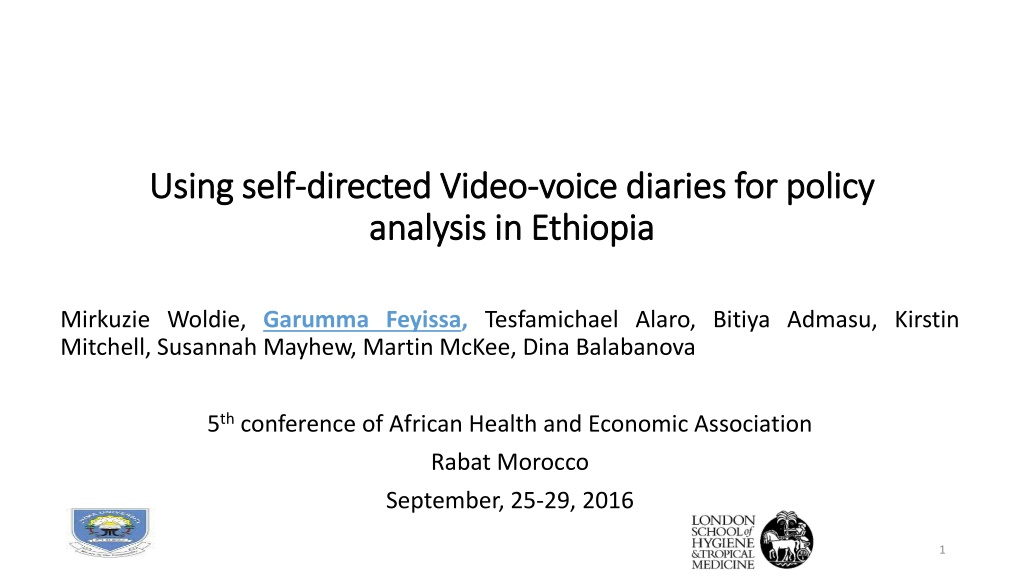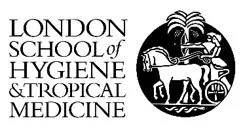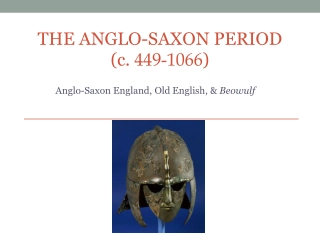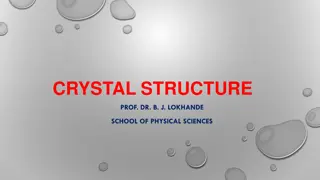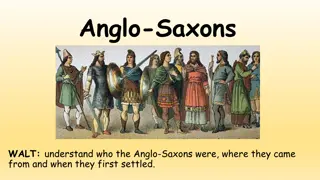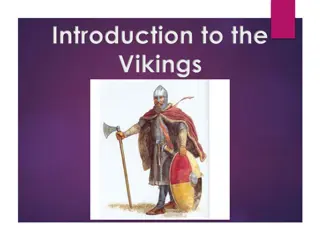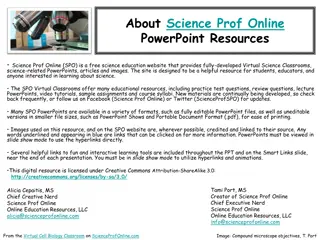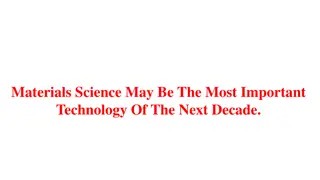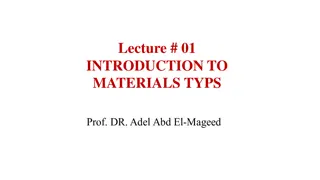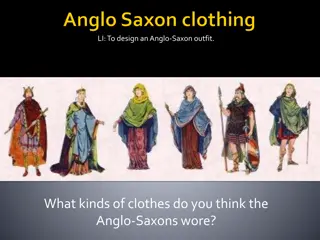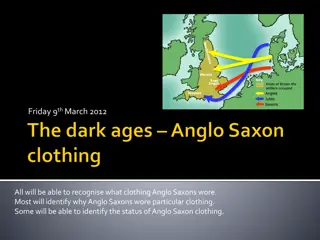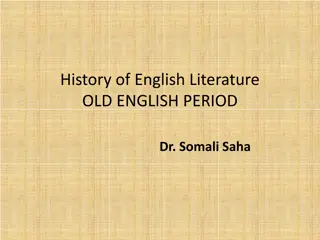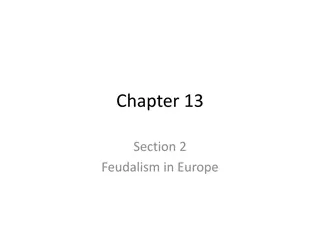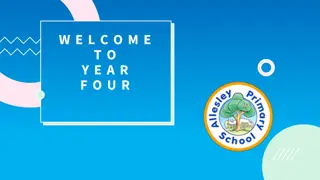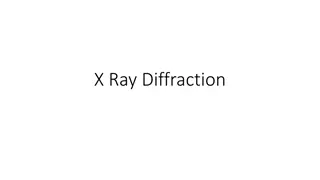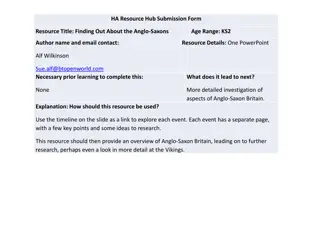The Saxons and Vikings Science - Materials and Structures
In this educational program, students learn to work with everyday materials, build structures, strengthen frameworks, and develop prototypes. They explore the properties of materials, make precise measurements, and create designs for products while enhancing their understanding of materials and techniques.
Download Presentation

Please find below an Image/Link to download the presentation.
The content on the website is provided AS IS for your information and personal use only. It may not be sold, licensed, or shared on other websites without obtaining consent from the author.If you encounter any issues during the download, it is possible that the publisher has removed the file from their server.
You are allowed to download the files provided on this website for personal or commercial use, subject to the condition that they are used lawfully. All files are the property of their respective owners.
The content on the website is provided AS IS for your information and personal use only. It may not be sold, licensed, or shared on other websites without obtaining consent from the author.
E N D
Presentation Transcript
Using self Using self- -directed Video directed Video- -voice diaries for policy analysis in Ethiopia analysis in Ethiopia voice diaries for policy Mirkuzie Woldie, Garumma Feyissa, Tesfamichael Alaro, Bitiya Admasu, Kirstin Mitchell, Susannah Mayhew, Martin McKee, Dina Balabanova 5thconference of African Health and Economic Association Rabat Morocco September, 25-29, 2016 1
Introduction Introduction A video diary is a digitized diary used for the collection of data on informants lives over an extended period. is an established social science method, it has more recently gained prominence in the field of health policy and systems research (Jewitt C, 2012). 2
Advantages of the method Advantages of the method The audio and video diaries are thought to have significant advantages: a) participant-led and authentic in reflecting unique individual experiences; b) capture experiences in real time, thereby minimising recall bias c) reflexive, stimulating the maturation of respondents ideas over time d) motivate and empower respondents 3
Objectives Objectives To document the usefulness of a modified Video voicemethod as a policy analysis tool Specific objective: To understand the role of Women development army (WDA) leaders as mediators of accessible primary healthcare in Ethiopia 4
Methods Study setting: Three districts of Jimma Zone, Oromia Regional State Selected purposively based on their category of performance in implementing WDA program Seka Chekorsa Best performing district Tiro Afeta Medium performing district Omo Nada Least performing district 5
Procedures Procedures Conversation to create rapport and trust Informing the participants about the purpose and procedures Training on how to use the mobile phones Providing encrypted phones with recording capability Supporting them through regular communication and visits 6
Methods Methods Footage will be obtained over 3-4 months, from 30 Women Development Army leaders in 3 districts. The videos and audios will be transcribed using multimodal transcription method (gestures, sounds, will be analysed) (Taylor, C. J. (2003). The transcriptions will be analysed and triangulated with data obtained through other qualitative methods. 7
Data security Data security Training on the use of pass words Simple pass words To call to one of the research team in case they face any difficulty instead of consulting others for technical support 8
Analysis (1) Analysis (1) The videos and audios will be transcribed using multimodal transcription method (gestures, sounds, will be analysed) (Taylor, 2003). The transcriptions will be analysed and triangulated with data obtained through other qualitative methods. The videos and qualitative data will be analysed and compared using MAXQDA 12. A co-production workshop with participants and researchers to allow the participants to view the footage and add their own interpretation of the findings: key themes, priorities for action, blind spots 9
Analysis (2) Analysis (2) 1. Developing guiding questions A major focus will be on analysing the video records along key insights gained from data gathered from other techniques (KIs, FGDs and document reviews) However, We will allow flexibility and explore new phenomena that were not discovered through other methods, but are participant-generated. 10
Analysis (3) Analysis (3) 2. Developing content log a description of major events that took place for each brief standard unit of time Coffee ceremonies, WDA meetings, other community events 3. Viewing and re-viewing the videos individually and in group (participant groups, research teams) and comparing interpretation 11
Fieldwork initiation Fieldwork initiation Challenges faced during pilot test Technical difficulties Recording events that are not relevant Soundless videos 12
Motivation WDA leaders who received the mobile phones were motivated to record their activities. 13
Discussions Discussions Our proposition is that the Video voice in format adapted to context can be a useful tool to inform policy development. The approach can provide real-time findings, capturing the perspectives of health service volunteers within their spacio-temporal context. 14
Discussions Discussions The potential added value of the methodology: 1. Ability to capture more accurately health volunteers perspectives The day to day activities of WDA leaders and the challenges they encounter can better be uncovered through diaries. Stimulates the maturation of respondents ideas over time 15
Discussions Discussions To accurately document challenges and opportunities for implementing WDA system with in the cultural context Dabo Iddir (Afosha) Dado Coffee ceremony Day in the life of WDA 16
Discussions Discussions 2. As a participatory method, The approach may enable participants to understand better their own needs, and those of their community, ensuring that these are reflected in developing effective PHC policies. effective in influencing practice and supporting advocacy(Derry SJ, et al, 2010). 17
Discussions Discussions 3. Authentic method WDA leaders will to provide authenticself-directed narratives(Jewitt C, 2012). WDAs will describe their daily work in their own terms and frame the challenges they face. Captures perceptions within their special and temporal context and strengthens rigour and immediacy of the research (Jewitt C, 2012). 18
Discussions Discussions 4. Complementary with other methods In this project, it will be used as a complementary method to other methods, desk review, key informant interviews and Focus group discussions. helping to interpret qualitative findings. To validate the interpretations of the data generated through other means 19
Discussions Discussions 5. As intervention Data obtained through diaries, and reflexivity over time, may itself act as an intervention, changing respondent s perceptions of their reality. Construction of reflections on the past and on future actions The co-production workshop to interpret and prioritise reoccurring themes. will enhance respondent motivation 20
Selected references Selected references Erickson, F. (2006). Definition and analysis of data from videotape: Some research procedures and their rationales. In J. L. Green, G. Camilli, & P. B. Elmore (Eds.), Handbook of complementary methods in education research (pp. 177-205). Mahwah, NJ: Erlbaum Derry, S. J., Pea, R. D., Barron, B., Engle, R. A., Erickson, F., Goldman, R., ... & Sherin, B. L. (2010). Conducting video research in the learning sciences: Guidance on selection, analysis, technology, and ethics. The Journal of the Learning Sciences, 19(1), 3-53. Jewitt, C. (2012). An introduction to using video for research. Taylor, C. J. (2003). Multimodal transcription in the analysis, translation and subtitling of Italian films. The translator, 9(2), 191-205. 21
Acknowledgements Acknowledgements London School of Hygiene and Tropical Medicine Jimma University Study participants 22
